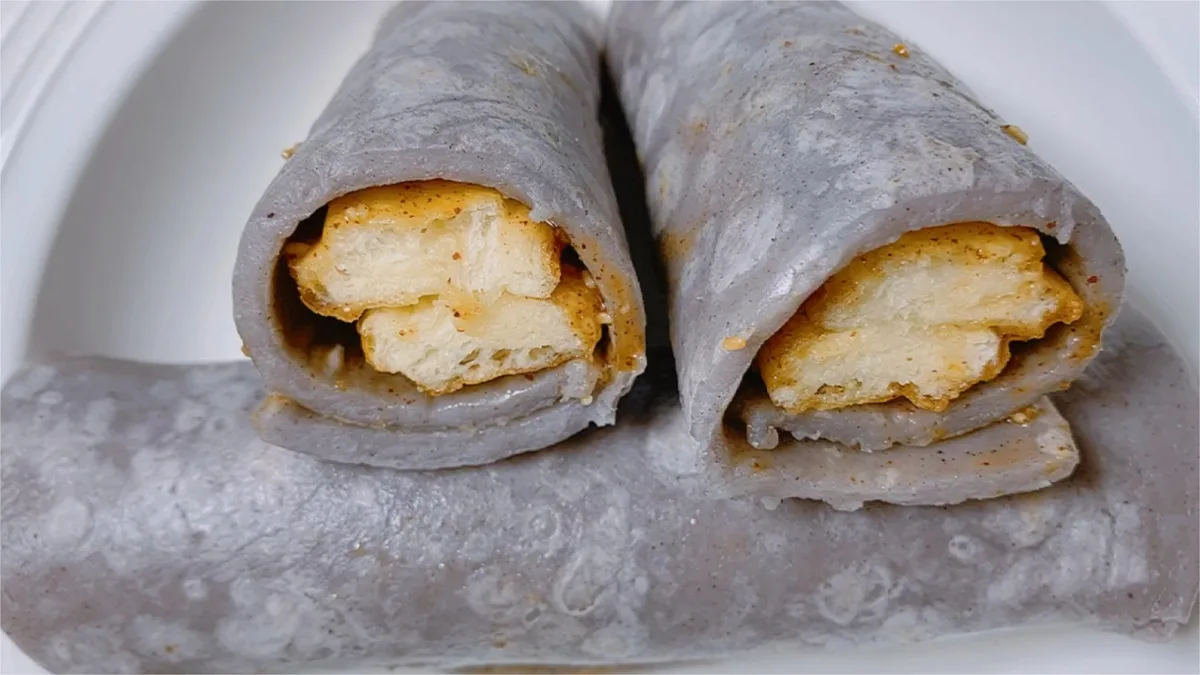Yunnan Rice Cake, also known as Erkuai (饵块), boasts a long history. According to records, it was mentioned as early as the Western Han Dynasty in the “Jiu Jiu Pian,” which includes the phrase “cakes, rice, millet porridge, and sweet bean soup.” The Tang Dynasty scholar Yan Shigu’s annotation stated, “Soak rice flour and steam it to make Er,” indicating that Erkuai has a history of at least two thousand years. Erkuai is widely popular in Yunnan, Guizhou, and parts of Sichuan, where it is a beloved traditional snack.
Production Process
The process of making Erkuai is relatively complex, with each step being crucial to ensuring its unique texture and flavor. The specific steps are as follows:
- Ingredient Selection: Choose high-quality, aromatic, and sticky rice as the main ingredient. This is the foundation for making delicious Erkuai.
- Soaking: Clean the rice and soak it in water for a while, allowing the rice to absorb enough water and become soft.
- Steaming: Take the soaked rice and steam it in a steamer. The steaming time depends on the type and hardness of the rice, usually ranging from 30 minutes to an hour.
- Pounding: Place the steamed rice in a stone mortar or mechanical pounder and pound it into a paste. This is one of the most critical steps in making Erkuai, requiring a certain amount of strength and skill.
- Kneading and Shaping: Take the pounded rice paste, place it on a board, and knead it repeatedly until it becomes a uniform, elastic dough. Depending on the desired form, it can be shaped into blocks, strips, or slices.
Flavor and Eating Methods
Erkuai has a distinctive rice aroma and a soft, glutinous texture, making it chewy and satisfying. There are various ways to prepare and enjoy Erkuai, including roasting, boiling, frying, braising, steaming, and deep-frying, each offering a unique flavor and never becoming tiresome to eat.
- Roasted Erkuai: Cut Erkuai into thin slices or small pieces, grill over smokeless charcoal until slightly browned, and spread with sesame paste, chili sauce, or oil chili. It can be served with cold slices of beef or mutton, or with fried dough sticks, offering a delicious taste.
- Fried Erkuai: Cut Erkuai into thin slices or strips and stir-fry with ham slices, pickled vegetables, green onions, and chives. The result is a rich, spicy dish with a memorable taste, famously known as “Da Jiu Jia,” renowned for its unique preparation and flavor.
- Braised Erkuai: Use thin, uniformly cut strips of Erkuai from Guandu, stir-fried with lard, sweet and salty soy sauce, and pickled vegetables until well-braised, resulting in a dish with a rich braised flavor, shiny and reddish in color.
- Steamed Erkuai: Cut Erkuai into thick slices or pieces and steam until fully cooked, maintaining its soft, glutinous texture and original flavor.
Cultural Significance
Erkuai is not just a culinary delight but also carries rich cultural significance. In Chinese traditional culture, Erkuai is considered a festive food, often enjoyed during celebrations such as the Chinese New Year and the Dragon Boat Festival. It symbolizes good fortune and happiness and is sometimes used as an offering in ancestor worship, expressing respect and gratitude towards ancestors.


